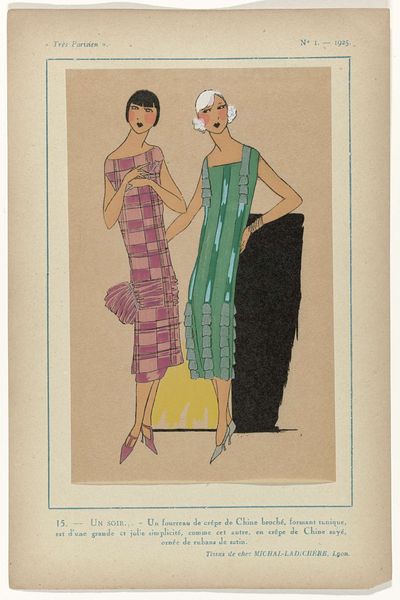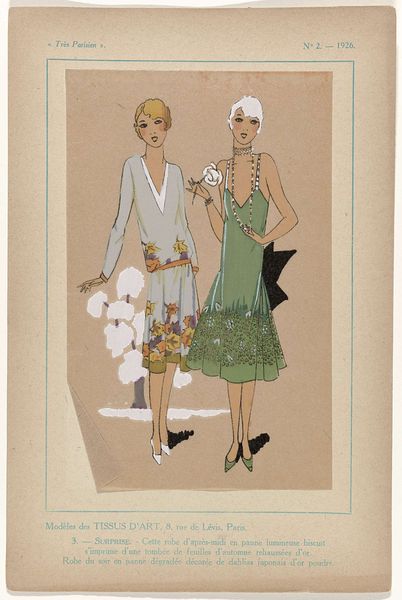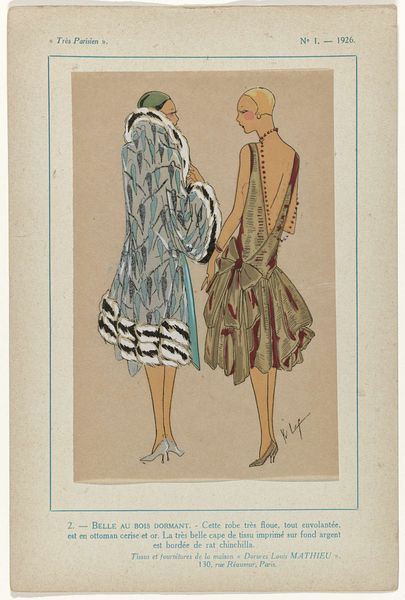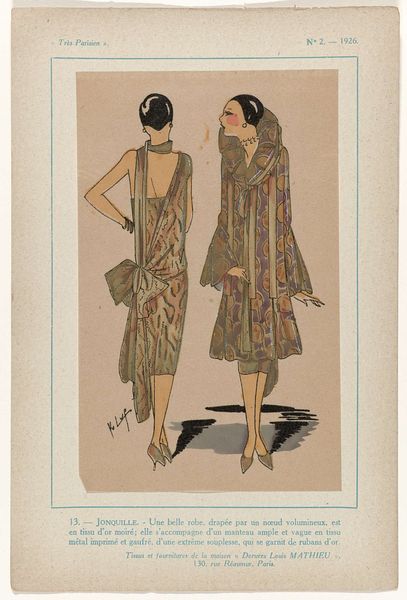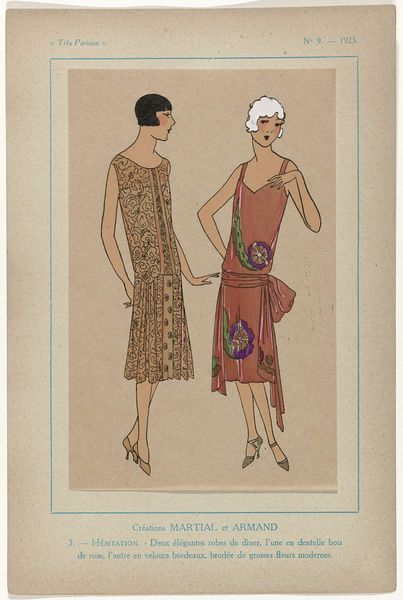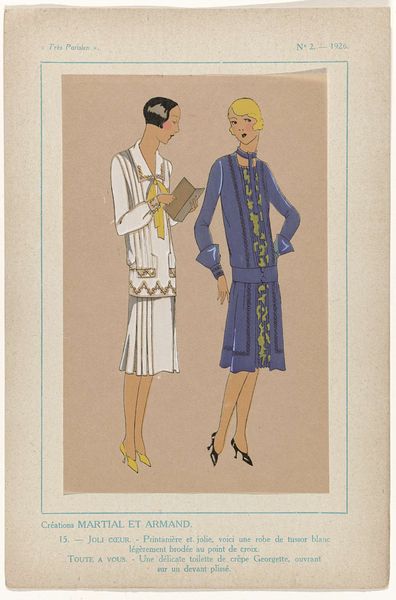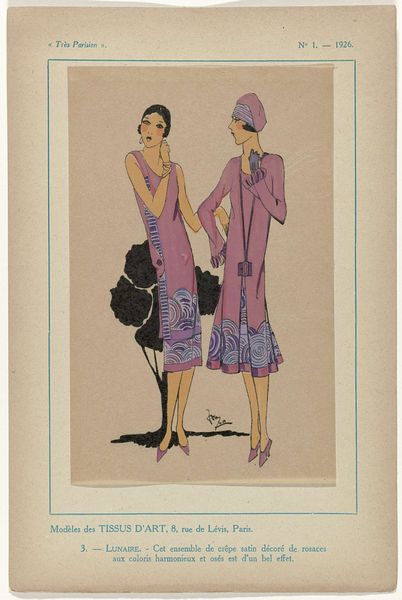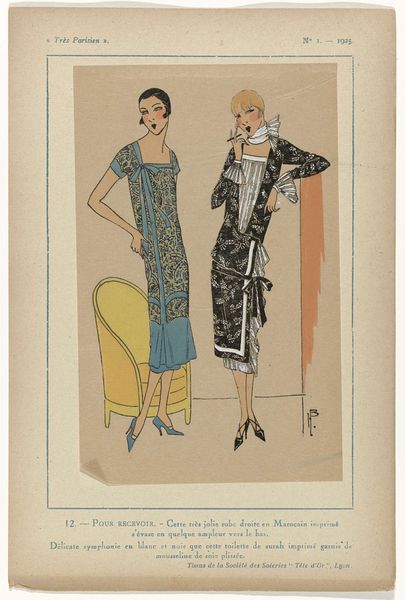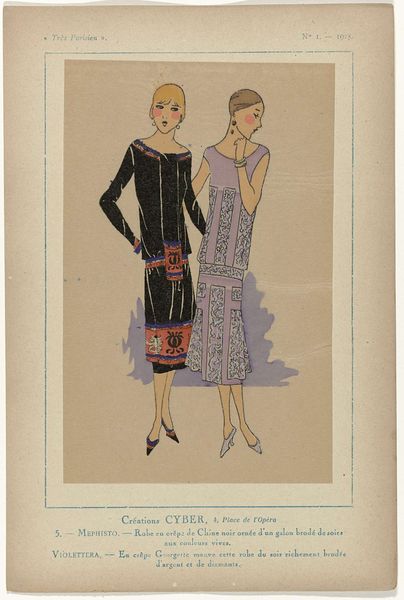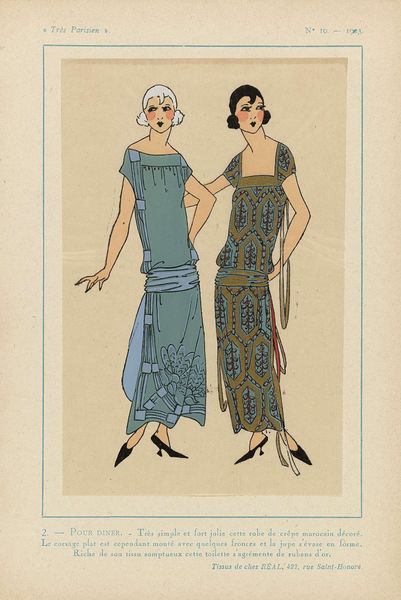
Dimensions: height 195 mm, width 120 mm, mm
Copyright: Rijks Museum: Open Domain
Editor: "Très Parisien, Nuit de Noël," created in 1925 by G-P. Joumard. It’s a print, likely a watercolor illustration, featuring two women in elaborate flapper dresses. The detail in the fabrics is just incredible. How can we look at this work in terms of the materials used, and how they reflect the era? Curator: Certainly! Let’s think about the context in which this image was made. "Très Parisien" wasn’t just about portraying pretty dresses; it was about showcasing the materials themselves: printed silk faille, metal-thread satin, waxed ribbon as the text states. These fabrics represent the rise of industrial production and new technologies in textile manufacturing, but they also speak to the exclusive nature of Parisian haute couture, influencing and shaped by new consumptions of the bourgeois and elites. Editor: So, it’s less about the figures themselves, and more about the…fabrication? The labor behind these incredible garments? Curator: Precisely! We should consider who was making these garments, likely young women working in sweatshops. The image presents the polished end product, concealing the often-exploitative labor practices behind these ‘luxury’ items. How do the chosen materials, like metallic threads and printed silks, reflect a desire for modernity and wealth? What kind of consumption did this represent? Editor: That completely changes how I see the image. I was so focused on the aesthetics, but now I'm thinking about the human cost of producing those beautiful dresses. Curator: Material analysis opens up fascinating avenues for understanding social and economic realities embedded within the art object itself. It challenges us to move beyond mere surface appreciation. Editor: I'll definitely look at art differently now. Thank you for pointing out that sometimes, what's *in* the artwork isn't as important as *how* it got there.
Comments
No comments
Be the first to comment and join the conversation on the ultimate creative platform.
